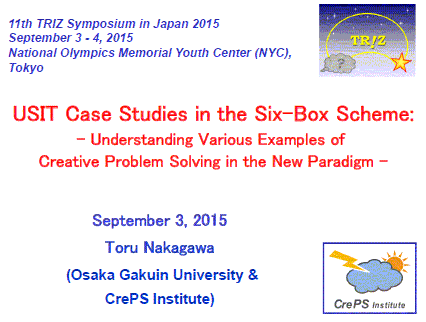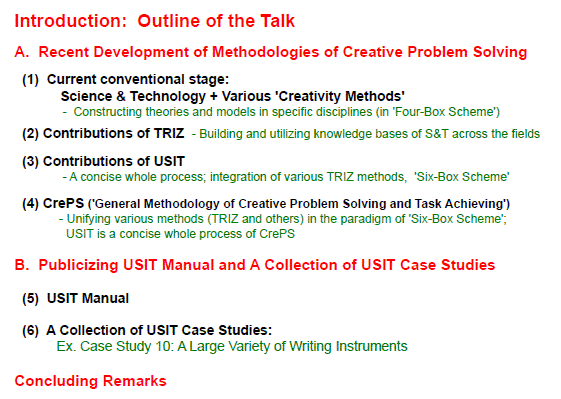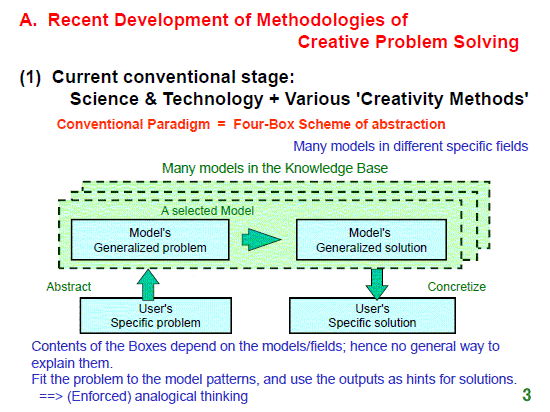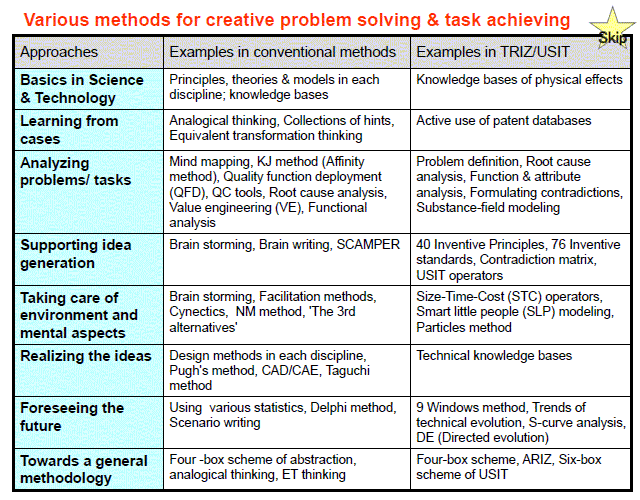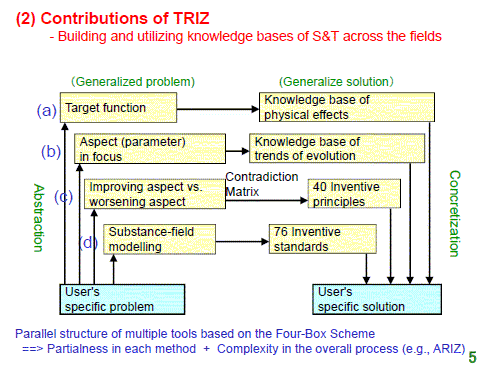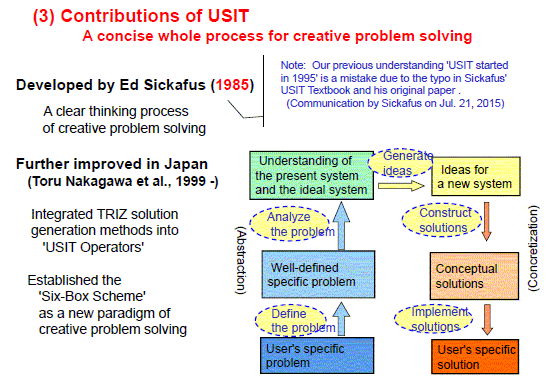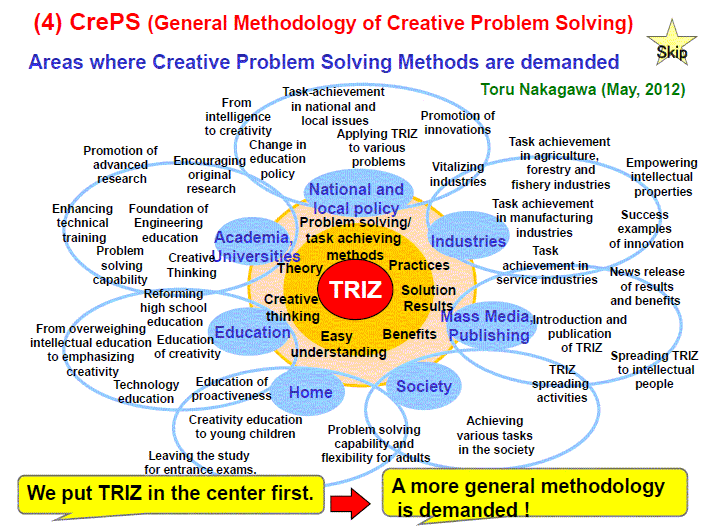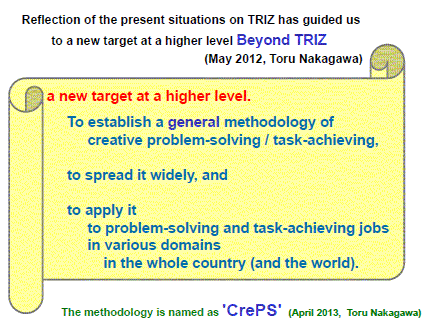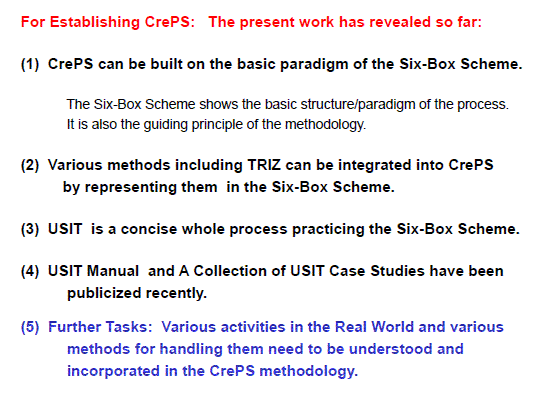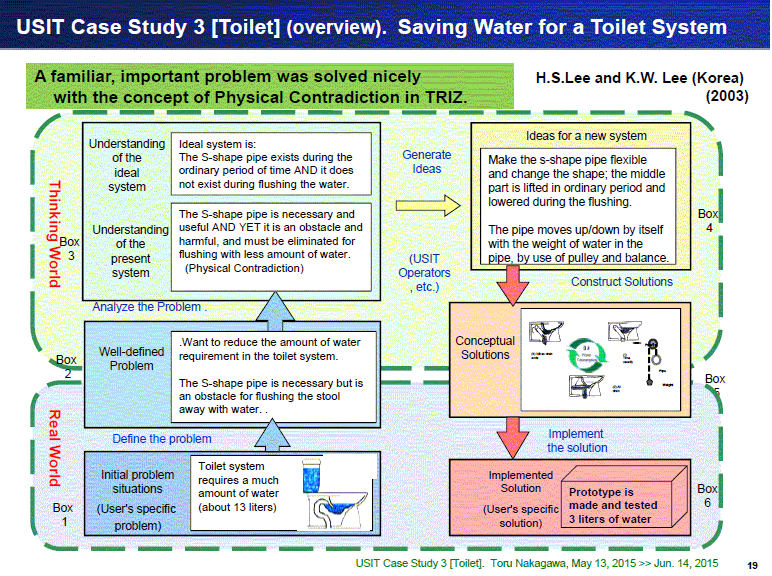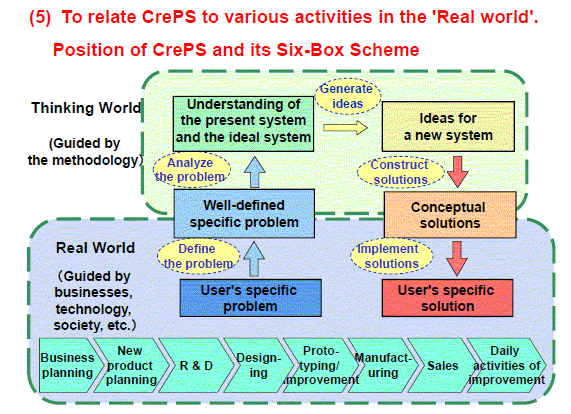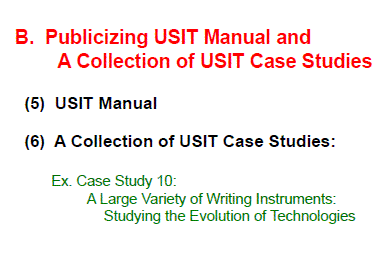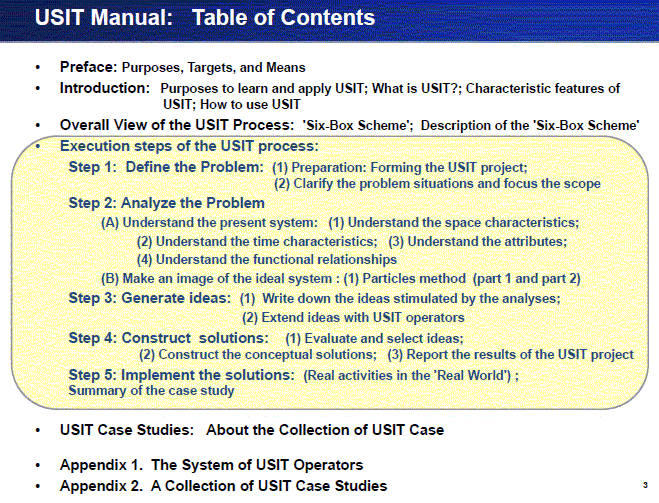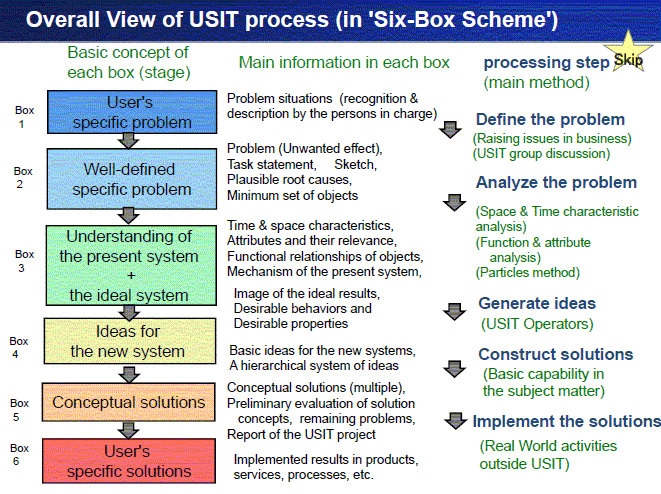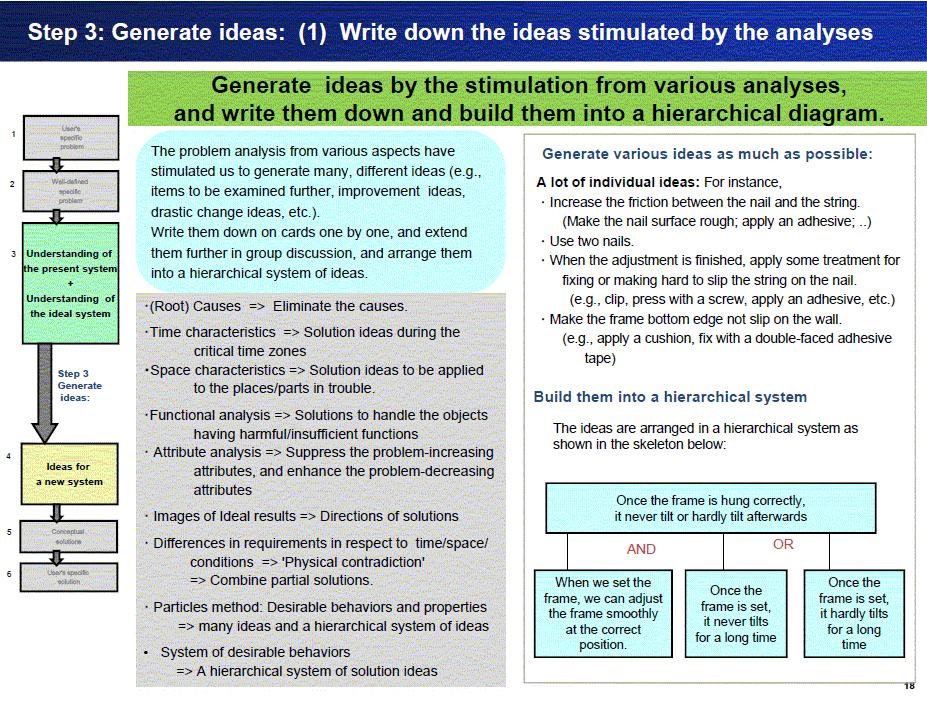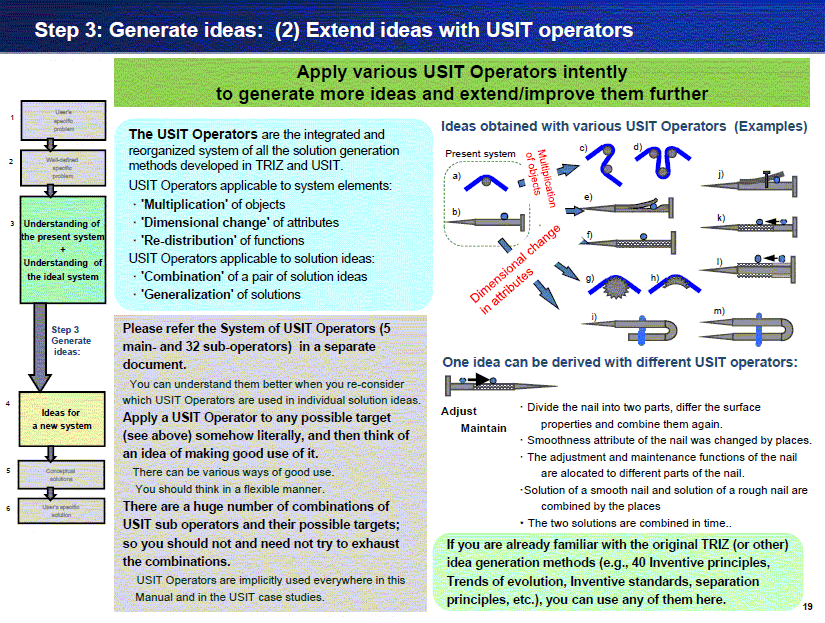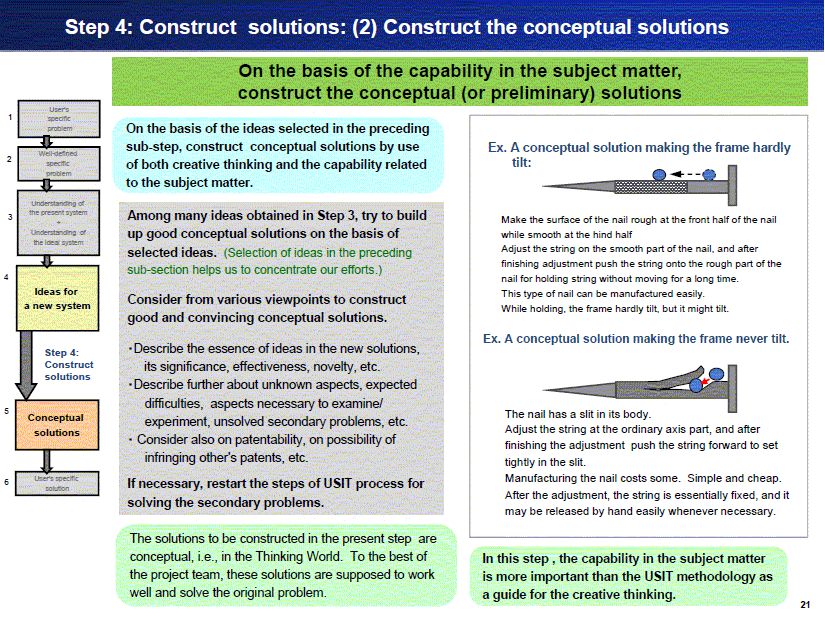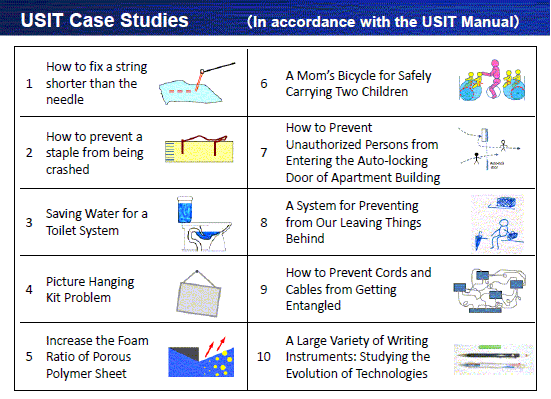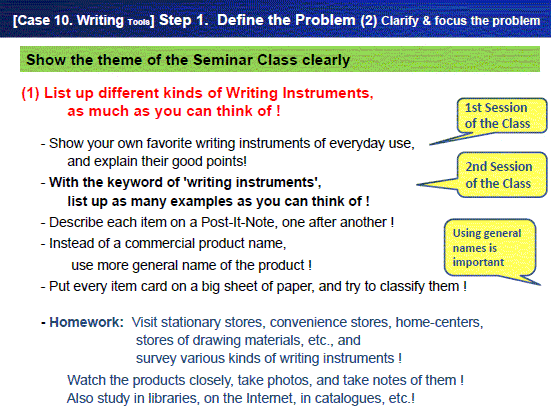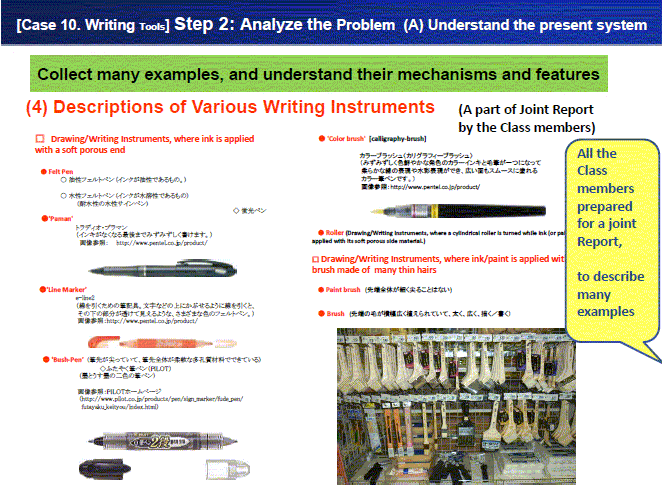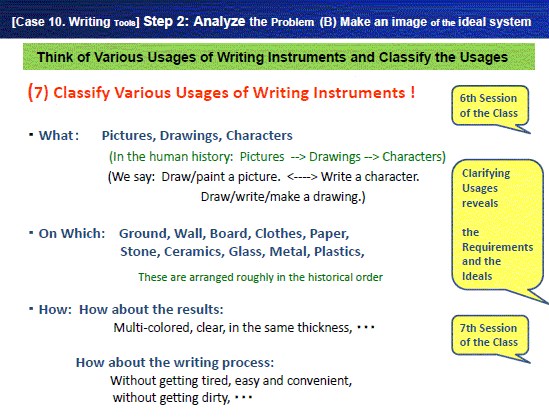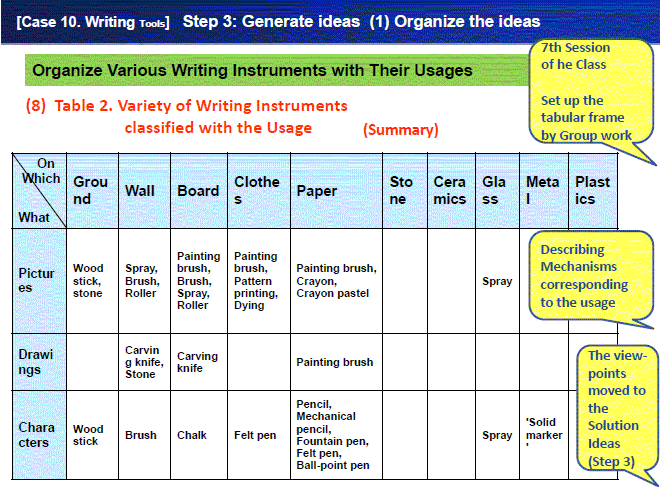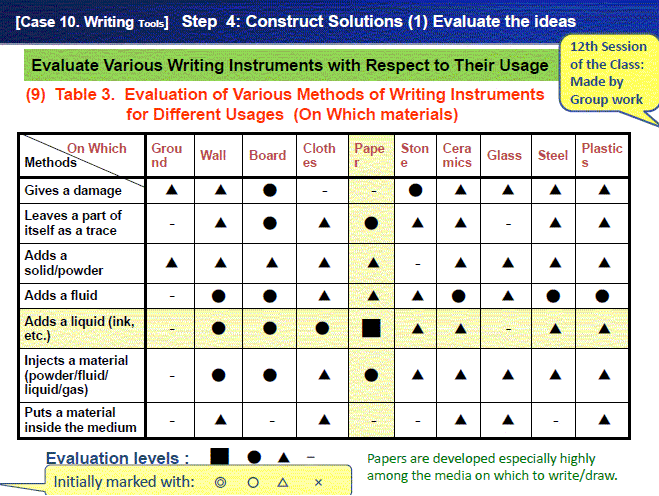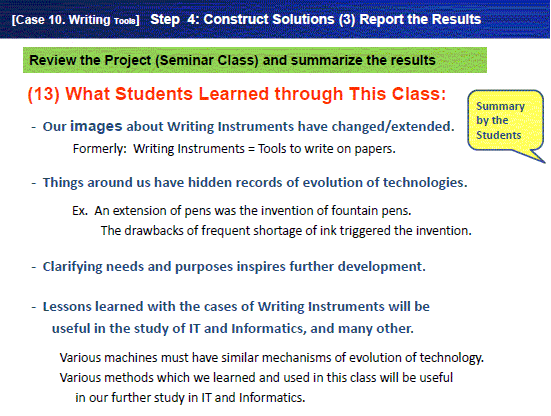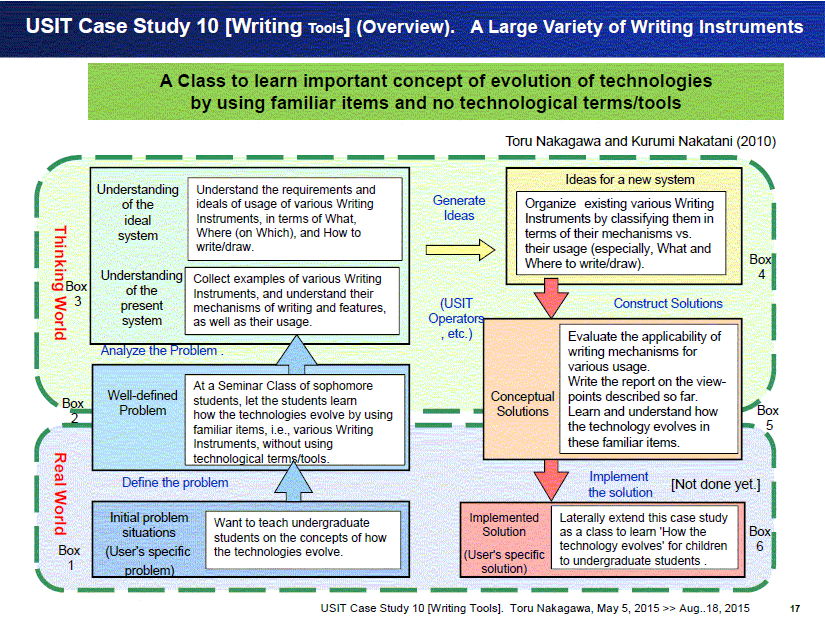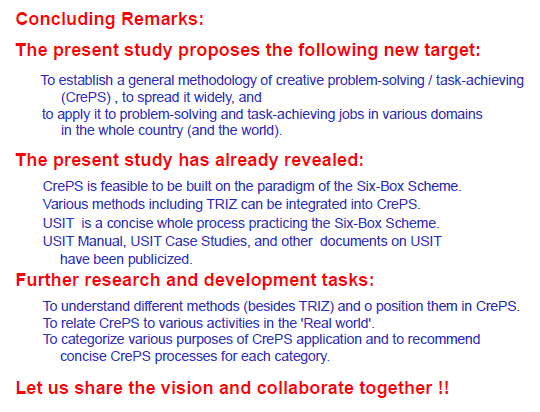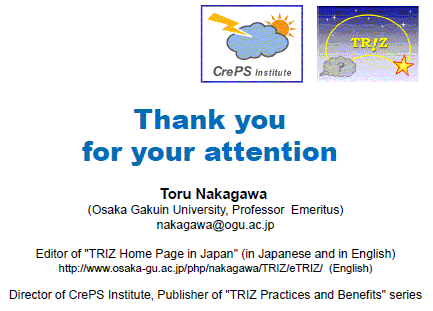This paper was presented at the Japan TRIZ Symposium 2015 last year, as an oral talk in Japanese with slide projection in English and in Japanese in parallel (20 minutes talk + 5 minutes discussion).
Every year at Japan TRIZ Symposium, I have been presenting the progress of
my research for one year to the audience who study/research/use TRIZ/USIT, in a manner as easy to understand as possible.
I first talked about the recent development of creative problem solving methods from my point of view, i.e., conventional --> TRIZ --> USIT --> CrePS, for clarifying the methodological essence and my intentions. My present understanding is explained with the 'Six-Box Scheme' which can be the new paradigm for integrating TRIZ and many other creative problem solving methods together, the CrePS Methodology thus integrated, and the USIT process for carrying out CrePS in a concise manner.
In such a context, I made the USIT Manual and A Collection of USIT Case Studies in accordance to the Manual. I also talked about a case study chosen from the Collection. It is the Case Study of 'A Large Variety of Writing Instruments: Studying the Evolution of Technology', which was carried out in my seminar class of sophomores. It is a unique example of studying the essence of TRIZ (i.e. evolution of technology) without using any specific TRIZ terms.
All the USIT-related information presented here can be read in more detail in many articles posted already in this site "TRIZ Home Page in Japan".
USIT Case Studies in the Six-Box Scheme
- Understanding Various Examples of Creative Problem Solving
in the New Paradigm -
Toru Nakagawa (Osaka Gakuin University & CrePS Institute).
11th TRIZ Symposium in Japan 2015
September 3 - 4, 2015, National Olympics Memorial Youth Center (NYC), Tokyo
Abstract
The present author has been working since 1997 for the research and proliferation of TRIZ and creative problem solving methods.
(1) At first, I worked for studying the TRIZ methods,
(2) then I introduced USIT (as an overall process of simplified TRIZ).
(3) Then we integrated all the idea generation methods in TRIZ into USIT, and
(4) further represented the USIT process in the data-flow model of the Six-Box Scheme and found it a New Paradigm of Creative Problem Solving.
(5) Hence since 2012, I have been advocating the 'General Methodology of Creative Problem Solving (CrePS)' as a new methodology which can integrate TRIZ and various other creativity methods on the basis of the new paradigm, and have been demonstrating USIT to be a concise process for applying the CrePS methodology.
In the present paper,
(a) the author has written 'USIT Manual' in the Six-Box Scheme (of about 30 slides).
(b) Various case studies of creative problem solving (using TRIZ, USIT, etc.) and practices in education are made into a 'Collection of USIT Case Studies' (including over 10 cases, described in about 20 slides, each).
The Six-Box Scheme is found useful to describe these case studies and to actually lead the process of problem solving.
For instance, a sophomore seminar of 'Studying the evolution of technologies by using familiar items such as writing instruments' was a trial to guide the students to understand the important TRIZ concepts using no TRIZ terminology nor TRIZ tools (see Nakatani & Nakagawa 2010). The process in the seminar was in good accordance with the Six-Box Scheme, I myself realized recently.
Extended Description
The 'USIT Manual' describes the USIT process in the Six-Box Scheme, by demonstrating the application to one particular case consistently and also by mentioning variations of usage.
The following points differ from the original version of USIT by Ed Sickafus:
・ The whole process is made clearer and more universal.
・ Some specific terms and their representations are not used, e.g., Qualitative Change Graph, Closed-World Method, AND/OR tree, etc..
・ The Uniqueness method for treating the space and time characteristics are divided into the methods in the analysis stage and in the idea generation stage.
・ Both stages of analyzing the present system and of making images of ideal system are always carried out in the Six-Box Scheme, because they are more effective together than either one of them.
・ The stages of Idea generation and Solution construction are made more systematic.
・ At the Idea generation stage, the USIT Operator system (of 5 main and 32 sub-operators) can be used. In the actual cases, however, the ideas can be generated rather smoothly without using the USIT operators.
・ USIT is regarded not as a specific method for problem solving but as a compact form of carrying out the very general CrePS method.
Some of the cases in the Collection of USIT Case Studies were not thought of applying USIT but rather TRIZ or a free-hand method at that time.
The seminar on 'A large variety of writing instruments' is such a case.
It was carried out in the following manner:
First, the students were requested to show their always-carrying and favorite writing tools to all the members and to do the homework of going out to observe various writing instruments (Stage of Problem Definition).
Working mechanisms and principles of the writing tools were discussed (Stage of Analysis of the Present System),
and then their usages were discussed (Stage of Making images of the ideal system).
Next, the writing tools are tabulated in the framework of usage and described in terms of their working mechanisms (Idea generation).
Working mechanisms of the tools are then evaluated in their usefulness/effectiveness (Stage of Solution Construction).
Even though the seminar did not try to think of new individual solutions, it was carried out along the Six-Box Scheme for finding new and better writing instruments. The seminar was successful in guiding the students to understand that the evolution of technology in the field of writing instruments is advancing towards better working mechanisms and their concretization.
A. Recent Development of Methodologies of Creative Problem Solving
(1) Current conventional stage: Science & Technology + Various 'Creativity Methods'
- Constructing theories and models in specific disciplines (in 'Four-Box Scheme')
B. Publicizing USIT Manual and A Collection of USIT Case Studies
